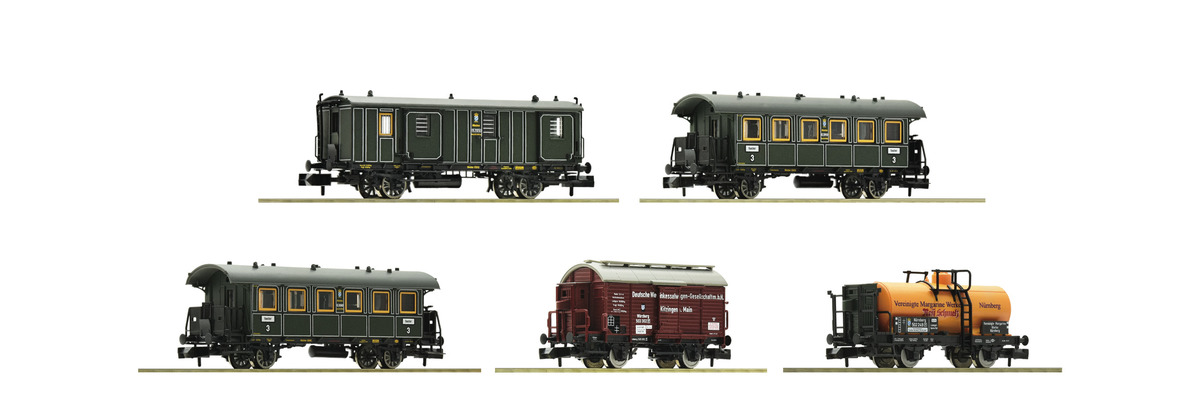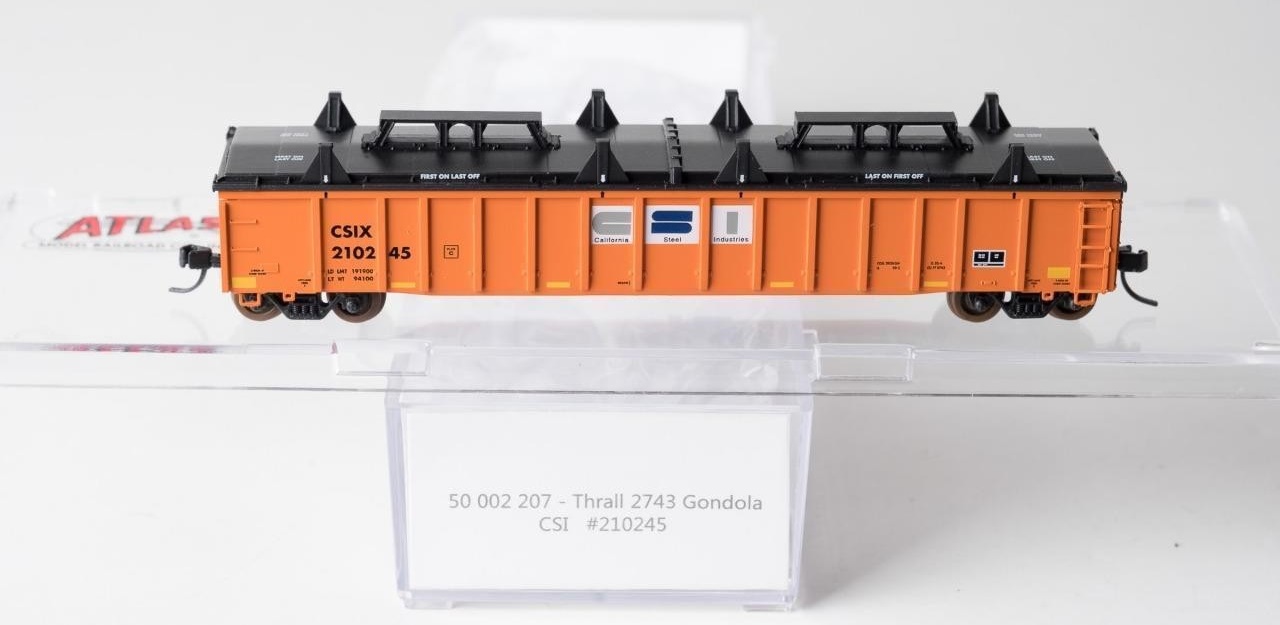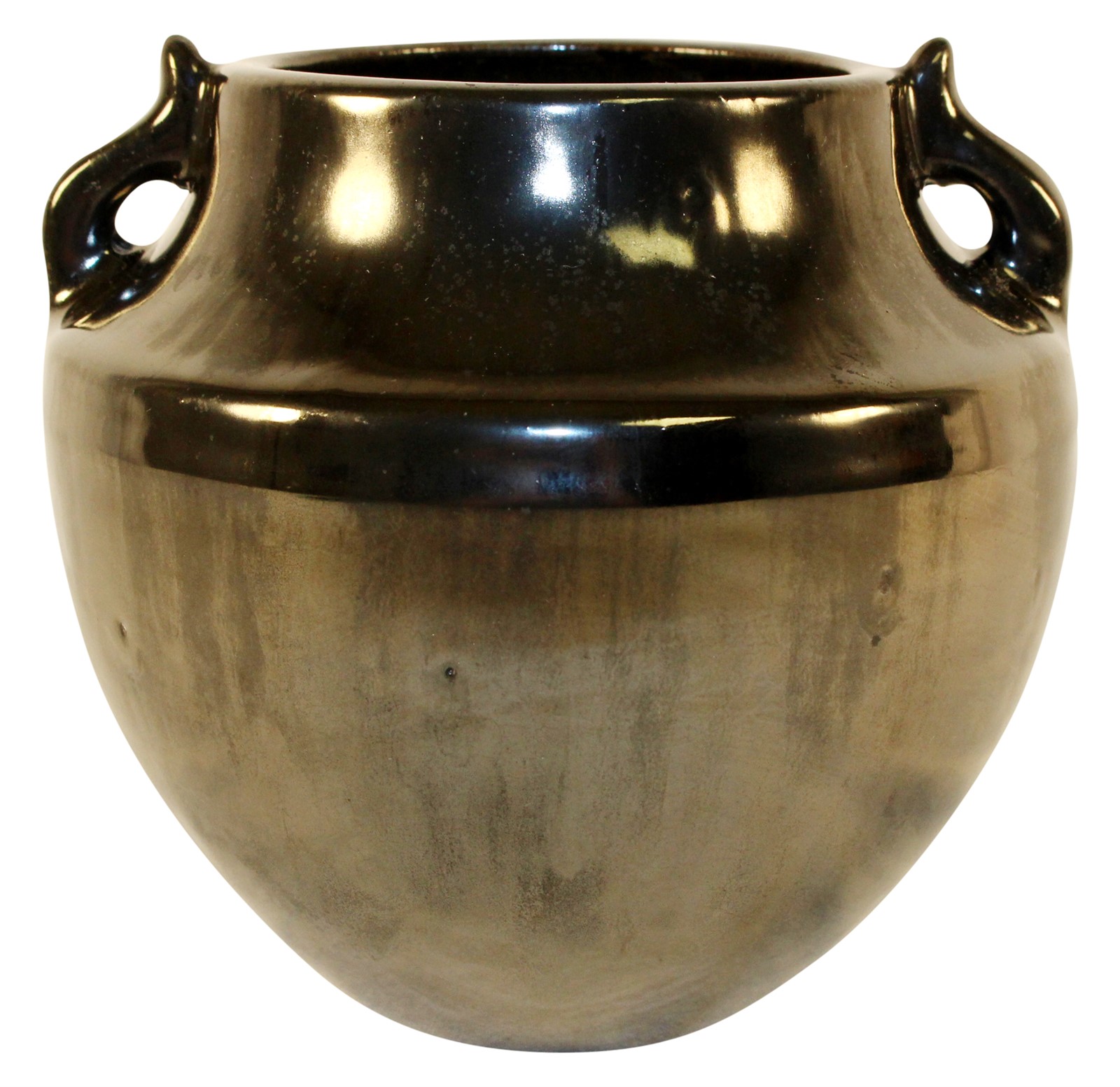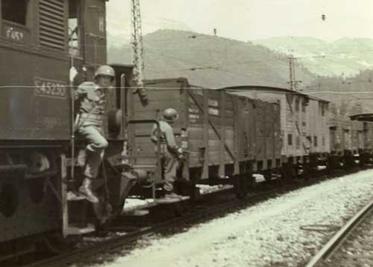Specific Item Information: 5 piece wagon set "Goods train with passenger transportation" of the Royal Bavarian State Railways (K.Bay.Sts.B.). Epoch I.
Model with true to original livery and lettering. Coupler pocket according to NEM 355 standards and close coupling motion link.
Prototype History: Although each European country has a different history when it comes to railroads, every European country can trace the history of their railroads to the same beginning. The development of the modern railway system came about thanks to two factors: technological advances and war. Early trains were powered by steam engines, but steam engines were not originally suitable for rail transportation. The steam engine needed two major improvements before it would be suitable for rail transportation. The first issue with the steam engine was that its oscillating motion had to be made into a rotary motion that cold drive the wheels of a train. The second problem was that a stronger iron was needed to withstand the pressure needed to drive steam locomotives. The first problem was solved by James Watt. His Sun and Planet gear connected the piston to the wheels of the train somewhat off center to drive it forward. The second problem was solved by the implementation of the rolling and puddling process in 1783, which made iron stronger by eliminating impurities. The French Revolution and the Napoleonic Wars also contributed to the rise of railroads in Europe. The loss of so many horses during these wars made an alternative form of transportation necessary. Thanks to these factors, the first steam locomotive came in 1804. By 1820, a properly running locomotive had been designed and the rolling and puddling process had been developed and widespread enough to make cheap, quality railroads possible. From here, the history of railroads in Europe diverges by country.
Road Name History: 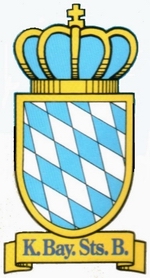 The Royal Bavarian State Railways (Königliche Bayerische Staats-Eisenbahnen or K.Bay.Sts.B.) was founded in 1844. The organisation grew into the second largest of the German state railways (after that of the Prussian state railways) with a railway network of 8,526 kilometres (including the Palatinate Railway or Pfalzbahn) by the end of the First World War.
The Royal Bavarian State Railways (Königliche Bayerische Staats-Eisenbahnen or K.Bay.Sts.B.) was founded in 1844. The organisation grew into the second largest of the German state railways (after that of the Prussian state railways) with a railway network of 8,526 kilometres (including the Palatinate Railway or Pfalzbahn) by the end of the First World War.
Following the abdication of the Bavarian monarchy at the end of the First World War, the 'Royal' title was dropped and on 24 April 1920 the Bavarian State Railway (Bayerische Staatseisenbahn), as it was now called, was merged into the newly formed German Reich Railways Authority (Deutsche Reichseisenbahnen) as the Bavarian Group Administration (Gruppenverwaltung Bayern). The management of the Bavarian railway network was divided into four Reichsbahn divisions: Augsburg, Munich, Nuremberg and Regensburg. The former Palatinate Railway formed the Ludwigshafen division. On 1 October 1933 the only group administration within the Deutsche Reichsbahn-Gesellschaft, the Gruppenverwaltung Bayern, was disbanded.

Following the abdication of the Bavarian monarchy at the end of the First World War, the 'Royal' title was dropped and on 24 April 1920 the Bavarian State Railway (Bayerische Staatseisenbahn), as it was now called, was merged into the newly formed German Reich Railways Authority (Deutsche Reichseisenbahnen) as the Bavarian Group Administration (Gruppenverwaltung Bayern). The management of the Bavarian railway network was divided into four Reichsbahn divisions: Augsburg, Munich, Nuremberg and Regensburg. The former Palatinate Railway formed the Ludwigshafen division. On 1 October 1933 the only group administration within the Deutsche Reichsbahn-Gesellschaft, the Gruppenverwaltung Bayern, was disbanded.
Brand/Importer Information: As a high-quality company we set the standard when it comes to prototype fidelity and functionality. Our aim is to enthrall novices and experts alike and to be the enduring long-term partner for a fascinating hobby that spans all generations. We achieve this with the true-to-detail design and the reliability of our models and with innovations that offer a new dimension in the play value and fun factor. The high commitment to quality that has characterised Fleischmann for more than 125 years has ensured our company?s position as an internationally leading brand for model railways.
Small-scale greatness. Its comprehensive range in the N scale makes Fleischmann the international market leader in this sector. There are over 350 highly detailed models to choose from in the space-saving 9-mm gauge. Continuous and targeted extension of the range will allow Fleischmann to expand its competitive edge in the future.
Small-scale greatness. Its comprehensive range in the N scale makes Fleischmann the international market leader in this sector. There are over 350 highly detailed models to choose from in the space-saving 9-mm gauge. Continuous and targeted extension of the range will allow Fleischmann to expand its competitive edge in the future.
Item created by: gdm on 2019-05-10 11:00:54
If you see errors or missing data in this entry, please feel free to log in and edit it. Anyone with a Gmail account can log in instantly.
If you see errors or missing data in this entry, please feel free to log in and edit it. Anyone with a Gmail account can log in instantly.


